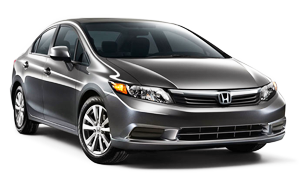Pay-the-Buyer Commercials
A better way to do video advertising.
Who wants to watch a conventionally delivered (unsolicited) commercial? Almost no one.

Want to watch a commercial about this car?
The only people who might want to watch a commercial about a given product or service are people who are in the market for that product or service.
So, rather than bother people with commercials they don't want to see, wouldn't it be better to let people request commercials about the products and services they plan to buy and then deliver those video ads? Yes, it would, but that's not enough because a buyer who requests commercials would be flooded with them.
The economic solution is to let people request paymercials, video ads that include a payment to buyers for viewing them.
Attaching a buyer payment to a commercial does a few good things. One, it gives buyers an extra incentive to watch. Two, it gives buyers a way of choosing among videos that are presented in search results. And, three, it enforces relevancy by penalizing any advertiser that shows an uncompetitive or unsuitable product or service.
From an advertiser's point of view, pay-the-buyer video is better because the message is focused on imminent buyers. And, a paymercial can be longer than a 30-second spot because real buyers are usually really interested in product/service information.
The amount of money that can be paid to buyers for viewing a commercial ranges from tens of cents to tens of dollars, depending on the value of the product. Honda might pay compact car buyers $15.00 EV to view an ad about an Accord, a dentist might pay patients $5 EV to view a video about her and her practice, and Colgate-Palmolive might pay toothpaste buyers $.50 EV to view a pitch about Total toothpaste.
